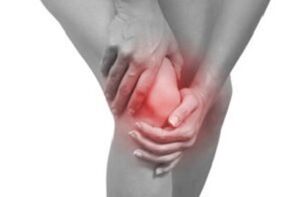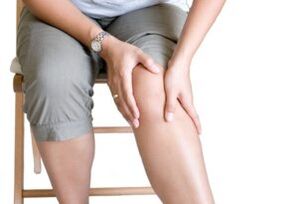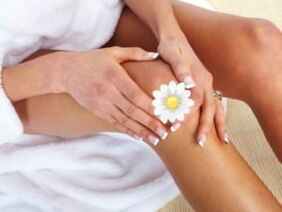
Of all the joints in the human body, knee pain is the most common complaint of people. The knee joint is complex, it bears a large load during different types of physical activity, therefore, there can be many reasons for pain. Knee pain, although it happens occasionally and goes away on its own, shouldn't go unnoticed.
Knee pain, regardless of its severity, dramatically affects the quality of life. Your favorite type of outdoor activity brings no joy, efficiency decreases, and a simple shopping trip becomes a problem.
In our article, we will consider what to do if the knee joints hurt, how to treat them, and whether it is possible to get rid of knee discomfort forever - the last question is especially relevant for peopleelderly who consider sedentary movements and joint pain syndrome an indispensable companion of age.
Pain diagnosis
- It is necessary to know the nature of the pain. The pain can be sharp, burning, throbbing, aching.
- Abolish the circumstances of the onset of pain - at night, after exertion, when walking, in the morning, sharp and sudden pain.
- Were there other signs of joint damage: swelling, hyperemia (redness), joint deformity, cracking, restricted mobility.
- Check for history of infection, stress, leg injury, or increased physical activity.
- Undergo an instrumental examination in a medical and preventive institution (LPU) - blood test, X-ray diagnosis, analysis of synovial fluid.
Causes of knee pain
There are more than 200 joint pathologies, most of them are accompanied by more than just pain. Only on the basis of a set of symptoms and exams can you determine what is causing your knee pain.
Traumatic pathology
In traumatic pathologies, knee pain occurs during joint injuries (blows, falls, prolonged stress on the joints - typical of athletes) or during general diseases of the body.
Consider the main traumatic pathologies.
Knee fracture
Fracture or displacement of the patella, fractures of the condyles of the femur and / or the tibia. When you fall from high on your knees, in a car accident, etc.
The victim feels a sharp and intense pain at the time of impact, over time the pain does not stop, it may become slightly weaker, but intensifies when pressing or walking.
The joint swells, deforms, fills with blood (hemarthrosis), the knee does not flex and the kneecap becomes abnormally mobile.
Dislocated knee

It is characterized by the displacement of the bones of the joint relative to each other. Dislocation of the knee joint is of varying complexity (complete, incomplete, complicated by soft tissue rupture, etc. ).
The usual dislocation occurs as a result of a knee injury or as a result of a congenital anomaly: weakness or excessive elasticity of the ligaments, flat sliding paths of the femur in the joint, too high patellar position.
A dislocated knee joint is quite a serious injury, and if you do not deal with it in time, it can all end in serious complications. Dislocation of the knee joint is the most painful of all types, although it is rare.
Serious injuries such as dislocations should be treated in medical institutions, so there should be no independent intervention. This is what traumatologists do.
Sprain, rupture of tendons, ligaments
Depending on the degree of damage (partial ruptures of individual fibers, incomplete tear, complete rupture), symptoms appear: crunches and clicks during movement, bruising under the site of rupture, limitation of flexion-extension of the joint, swellingknee, joint too mobile (with complete rupture of ligaments). The pain is sharp and intense, but with a minor injury it may not appear immediately, but after some time.
Bursitis
Inflammation of the periarticular bursa due to trauma, infections, metabolic disorders, autoimmune disease. Often occurs in athletes and people with increased body weight. The knee swells, the pain varies in intensity, but increases with effort and at night.
Meniscus tear
May be the result of trauma or degenerative changes in cartilage tissue. Acute trauma is characterized by severe pain, swelling, and limited mobility. Symptoms of degenerative changes are mild.
Joint diseases
Knee pain can be a symptom of a medical problem.
we have listedthe most common diseases with knee pain syndrome:
Rheumatism
The diagnosis is much less frequent than in the 19th and 20th centuries. This is due both to the discovery of penicillin (and then to the production of other antibiotics) and to poor diagnostic capabilities in the past, when almost all joint disease was attributed to rheumatism.
A characteristic sign of rheumatism is the alternation of joint pain: first, one joint becomes inflamed, then the other. For example, knee pain decreases, but occurs in another large joint (elbow, hip).
Rheumatism is more common in children and adolescents, the disease develops after streptococcal infection of the upper respiratory tract.
Note: Advanced rheumatism causes damage to the heart (rheumatic heart disease) or nervous system (chorea).
Reactive arthritis
It is more common in people of childbearing age, since inflammation of the joints is most often caused by pathogenic microbes that sexually enter the human body.
Much less often, reactive arthritis is caused by infections of the gastrointestinal tract or infectious inflammation of the nasopharynx (sore throat, flu). After 1-4 weeks after illness, the patient notices that his legs have started to hurt at night.
Large joints (knees, ankles) and small (big toe pain or stiffness) can become inflamed and painful. Knee pain is accompanied by swelling and / or redness.
Sometimes symptoms include conjunctivitis (inflammation and pain in the eyes), keratoderma (thickening of the skin on the soles of the feet).
Reiter's syndrome
Urethritis (frequent and painful urination) and bowel disorders join the symptoms of common reactive arthritis.
Osteoarthritis
Illness of the elderly. Periodically, the knees hurt at night "for the weather". The load on the joint (long walk) increases pain, swelling and impairs joint mobility.
After rest and warming up, the pain goes away.
Baker's cyst
Swelling in the back of the knee, causing a feeling of constriction, difficulty in moving.
Osteochondritis dissecans (Köning's disease)
The cartilage covering the bone comes off, the painful knee hurts, and when the fragment comes off completely, the movement of the joint is hampered.
Osgood-Schlatter disease
It is more often diagnosed in adolescents. Knee pain increases when going up and down stairs, squatting.
Rheumatoid arthritis
An autoimmune disease whose mechanism is not clear. We note that the starting circumstances are the usual list of loads on the immune system: from stress and infection to hypothermia. Immune bodies attacking their own cells cause inflammation of the joint, especially its synovial membrane.
Under the influence of an attack by immune cells, the membrane swells, increases in size, and then begins to grow in the surrounding cartilage and bone tissue. The result of the process is pain in the knee joints, which becomes unbearable in the second half of the night.
The disease lasts for years, treatment includes nonsteroidal anti-inflammatory drugs, corticosteroid hormones, gold preparations, immunosuppressants, antimalarial drugs.
Comes from incorrect metabolism. Due to alcohol abuse, "manure" products (meats, smoked meats, pickles).
Uric acid produced in the blood is deposited in the joints in the form of sodium urate crystals. Increasing "deposits" gradually affect the mobility of the joint, severe painful attacks appear, the time interval between attacks gradually narrows.
Vascular pain in the knees is characterized by a feeling of pulling along the vein, sometimes patients notice a sharp tingling sensation.
Only a doctor, after a detailed examination, can tell why the knee hurts, if there was no obvious injury. It is unwise to rub the knee joint with a remedy that "helped a neighbor". After all, whatever helps heal a joint injury can provoke an exacerbation of the autoimmune mechanism of the disease.
Knee Pain Treatment
The doctor chooses a treatment regimen based on the diagnosis.
Therapeutic measures aim to combat:
- with the cause of the disease - infection, tumor, abnormal metabolic processes, failure of the immune system.
- with pain syndrome - symptomatic treatment includes analgesics, intra-articular blockages.
- with degenerative processes - drugs with chondroprotectors help restore cartilage tissue in the joint.
If necessary, resort to surgery, stent, use physiotherapy and therapeutic exercises for the joints.
Pain relief products
Checklist for people with knee pain - what to do to relieve the disease.
| Cause of pain | What to do |
|---|---|
| Pain clearly resulting from trauma | Provide stillness of joints and limbs, ice or cold compress on the knee. Immediate medical attention. |
| Pain in arthritis (reactive, rheumatoid, etc. ) | Specific treatment with antimicrobial and anti-inflammatory drugs is prescribed only by a doctor. For nighttime pain, you can apply a heating pad, ointments made from bee venom. |
| Pain in osteoarthritis (post-traumatic, age-related, overweight people) after exercise or at night | All warming compresses with herbal tincture, rubbing ointments with chondroprotectors. |
Severe joint pain is relieved with nonsteroidal anti-inflammatory drugs (NSAIDs).
But most patients (overweight people, age-related joint changes) would not have to wonder what to do with the pain if they observed the preventive minimum:
- Good nutrition with a sufficient amount of calcium, vitamins, the fight against excess weight;
- Reduction of severe stress on the joint until a change of work, if it is a question of "standing" all day;
- Systematic physiotherapy to strengthen muscles and ligaments - a good muscle corset reduces the load on the bones;
Joint diseases can develop over the years and lead to a significant deterioration in the quality of life. A timely visit to a doctor and an arsenal of folk remedies will help keep the joy of moving into old age.
Joint treatment at home - folk recipes
Homemade recipes of ointments and compresses based on natural ingredients are used in classes - this is the only way to achieve lasting results.
7 simple folk remedies for knee pain:
- Cabbage leaves. On a fresh leaf, cuts are made so that the juice comes out. Put a spoonful of honey in the middle and apply this "compress" to the knee. The sheet is fixed with a bandage. Wear a bandage all day or perform the procedure at night. Burdock and plantain leaves are used in the same way.
- Propolis tincture for arthritis. If the knees "twist" at night (the causes of dull ache may be due to the weather change to stress on the legs), lubricate the joint with a mixture by rubbing it on the skin until itdried. If the knees are very sore, they make a full-fledged compress: moisten the soft tissues with dye and apply them to the joint, cover them with a film and wrap them with a scarf. The tool is also used to warm the joint if a sore knee has cooled down. Likewise, they use tinctures of natural stimulants: aloe, Kalanchoe, mummy, dead bee.
Important:biologically active substances cannot be used if the disease is autoimmune in nature. Stimulants activate the immune system and make the disease worse.

- Gelatin compress. A piece of gauze soaked in hot water is extracted, 1 teaspoon is poured into the center. gelatin, applied to the joint, wrapped in foil and wrapped. Repeat the procedure for 14 days at night. The product promotes joint nutrition and cartilage regeneration.
- A mustard compress will help if your knee hurts. Take honey and dry mustard in equal proportions, add warm water and salt until the consistency of porridge is formed. Lubricate the knee with a mixture, lay it with a cloth with a film and a bandage. Exposure time 20–40 min. , Remove in case of strong burning sensation. A mustard compress is used for the pain every other day.
- So that the legs do not hurt, a drug is prepared for oral administration: gelatin is stirred in 0, 5 liters of water in the evening, heated in the morning until completely dissolved. The mixture is taken before meals for ¼ - 1/2 glass, they drink for a month.
- Inner goat fat (100 g) is mixed with "Zvezdochka" balm (1 jar), the resulting ointment is rubbed for venous and joint pain in the knee.
- Kefir mask. 0, 5 l of crumble bread with kefir, add 1 tbsp. a soda. The mixture is insisted for 6 hours. Then the liquid is filtered, moistened with gauze, and compresses are made overnight for several days, until the pain subsides.
It is advisable to regularly apply home treatment with folk remedies, in combination with traditional medicine and modern methods. Do not wait until the disease has already firmly established itself and begins with severe pain, deformation of the joint. An early visit to the doctor will speed recovery, while the chronic form of the disease is more difficult to cure.
To note:treatment with folk remedies is allowed only with the approval of a doctor, after examination and diagnosis.

















































